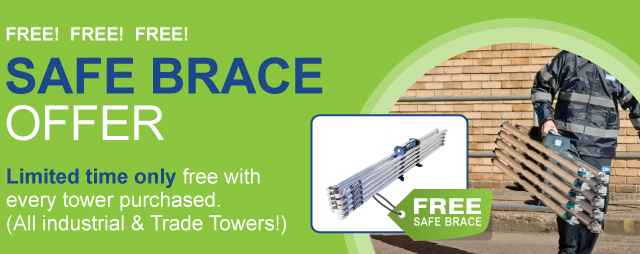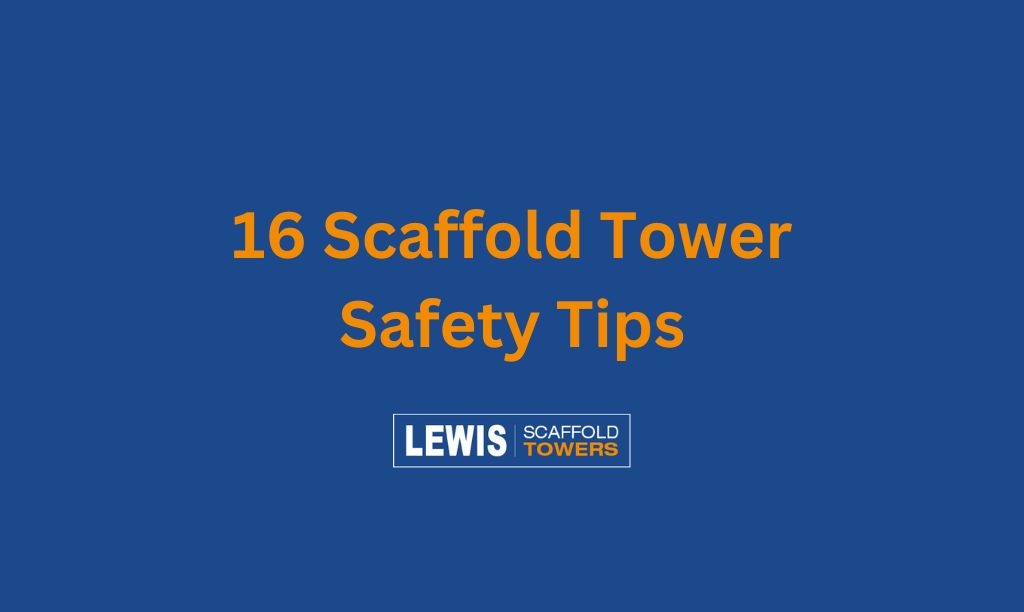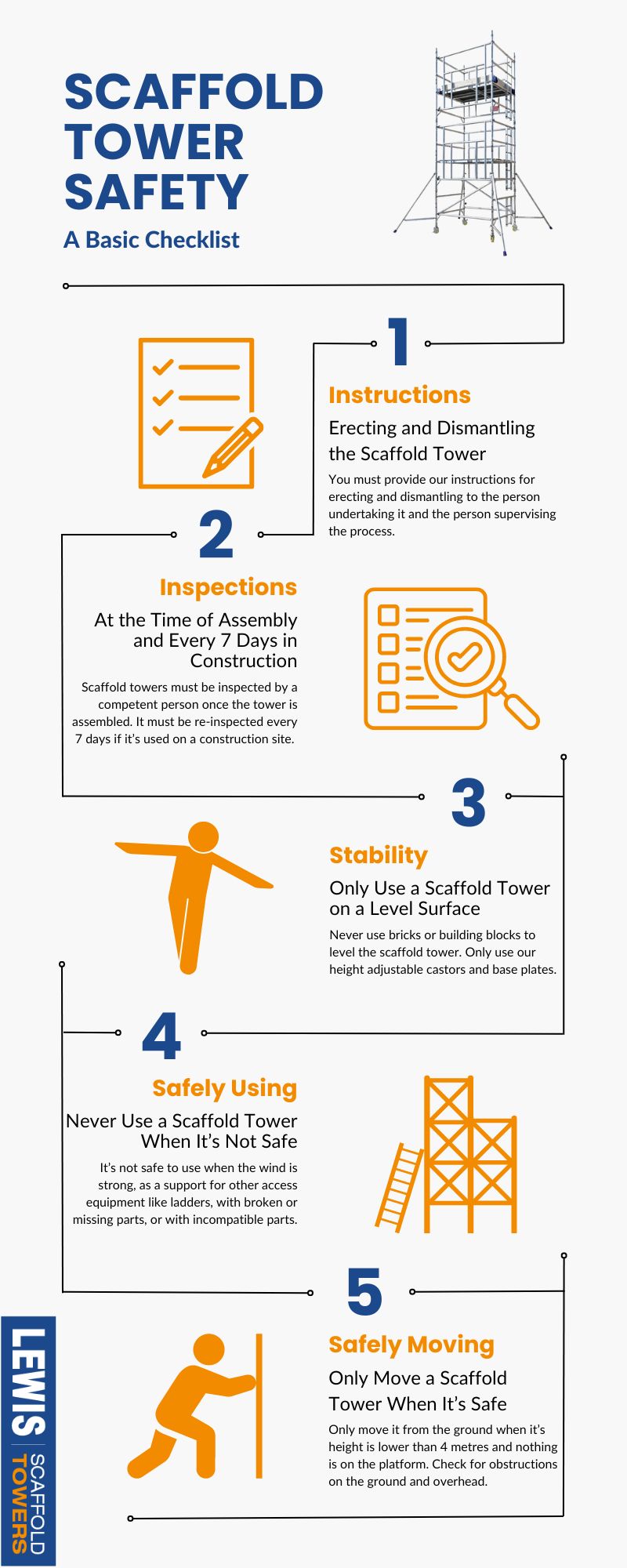Working at heights can be dangerous, but following these 16 scaffold tower safety tips can help keep you, your workers and members of the public safe.
It was reported that 5,000 workers suffered an injury having fallen from height according to HSE? HSE also reported that 40 workers who fell from height and 29 people who had been stuck by a moving object resulted in their death in 2022 to 2023.
Health and safety may seem like a joke on a construction site, but it’s very much a serious issue. Employers and workers (including contractors) have a responsibility to ensure the working environment is safe.
Safe use of mobile scaffold towers has the ability to reduce the likelihood of injuries and falls when working at height.
5 Risks of Using a Scaffold Tower without a Thorough Risk Assessment
- Workers could fall from height when assembling, using and dismantling a scaffold tower.
- Workers can suffer from an injury when assembling, using and dismantling a scaffold tower.
- Workers can suffer from an injury when carrying or lifting heavy objects up to the platform.
- Worker and members of the public can suffer from injury caused by objects that have been dropped from the platform.
- A scaffold tower’s stability could be compromised resulting in collapsing or overturning due to incorrect assembly, incorrect position, or by potential hazards like moving vehicles.
The Top 5 Scaffold Tower Safety Tips [Infographic]
6 Key Points from the Work at Height Regulations 2005
Planning and Risk Assessment
Avoid working at height whenever possible. If using a scaffold tower is unavoidable, a proper risk assessment identifying potential hazards must be conducted before work starts.
Competence and Training
Only individuals who are competent and trained in erecting, dismantling, inspecting, and using scaffold towers are allowed to do so.
Stability
Scaffold towers must be erected on firm, level ground with proper support for base plates or casters. Using makeshift methods like bricks for support is strictly prohibited. Manufacturer recommendations on maximum height should also be followed to ensure stability.
Inspections
Must be inspected before use and at regular intervals by competent workers. For construction work involving a fall risk of 2 metres or more, inspections are mandatory after assembly and every 7 days thereafter. Any identified faults must be remedied before continuing work, and inspection records must be maintained.
Manufacturer Instructions
You must follow the manufacturer’s instructions for assembly and use of the scaffold tower. The instructions manual should be readily available for those using the tower too. You can find all of our instructions here.
Fall Protection
Guardrails are a crucial safety feature. Working on a platform without guardrails or standing on an unprotected platform during assembly and dismantling is strictly prohibited by the regulations.
Here are the 16 Tips for Safe Use of a Scaffold Tower
Before Assembling a Scaffold Tower
- Conduct a risk assessment to identify and minimise the risks.
- Ensure the person who is going to assemble it is competent.
- Always check all of the components for damage.
- Follow the manufacturer’s manual every time it is erected and dismantled to the letter.
- Ensure the ground is firm and level ground, free from holes or obstructions. Fragile surfaces will compromise tower stability.
- Ensure there are not an overhead dangers like power lines.
During Use of a Scaffold Tower
- Wear personal protective equipment such as a hard hat, high vis, and non-slip shoes.
- Remain below the maximum load weight at all times.
- Ensure the working platforms have guardrails and toe boards assembled.
- Only move it when the height of the tower is less than 4 metres, the path is level and free of obstructions on the ground and overhead.
- Must avoid using it during bad weather conditions such as strong winds and heavy rain.
- Take regular breaks to avoid fatigue.
- Only climb from inside the tower, not on the outside.
- Regular inspections as often as possible, at least every 7 days in the construction industry and the tower is on site.
- Do not extend the tower beyond the manufacturer’s specification.
- Do not extend the tower using the castors or base plates. These are for levelling the platform only.
Summary
Working at height on scaffold towers can be risky, but following scaffold tower safety precautions significantly reduces the chance of falls and injuries. HSE statistics show thousands of injuries and fatalities from falls at height. These risks can be minimised through proper planning, using trained workers, and following Work at Height Regulations.



